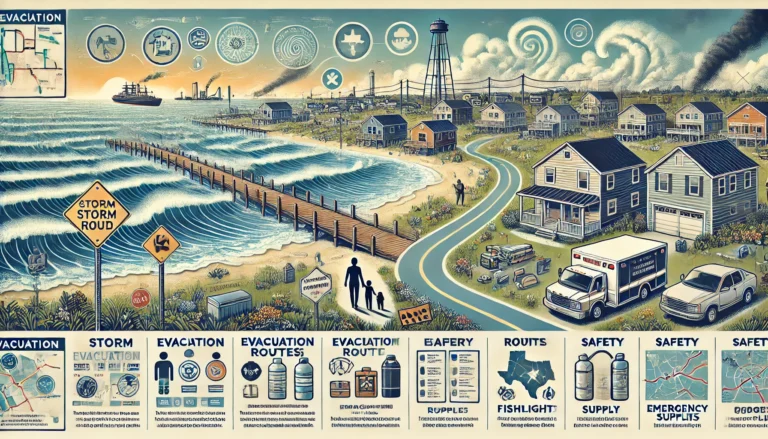
How to Handle Food with Bears in Alaska
Introduction
Alaska’s pristine wilderness is a haven for outdoor enthusiasts, offering breathtaking landscapes and a chance to experience nature in its purest form. However, sharing this space with wildlife, particularly bears, requires caution. Bears are curious and have an extraordinary sense of smell, making proper food handling critical for both human safety and the well-being of bears. This article provides a comprehensive guide on how to handle food with bears in Alaska, focusing on tips, best practices, and frequently asked questions.
Understanding Bear Behavior
Before diving into food-handling strategies, it’s important to understand bear behavior. Alaska is home to three bear species: black bears, brown bears (grizzlies), and polar bears. These animals rely on their keen sense of smell to locate food, and human negligence can lead to unwanted bear encounters.
Why Bears are Attracted to Human Food
- Bears are opportunistic feeders and can consume nearly anything with a scent.
- Improper food storage can condition bears to associate humans with food, leading to dangerous encounters.
How to Handle Food with Bears in Alaska
Proper food handling is vital when camping or hiking in bear country. Follow these essential tips to ensure safety:
1. Use Bear-Resistant Containers
Bear-resistant containers (BRCs) are sturdy storage units designed to keep food and scented items secure. They are often required in Alaskan parks to protect both humans and wildlife.
- What to Store in BRCs:
All food, garbage, toiletries, and anything with a scent (e.g., sunscreen, toothpaste). - Placement:
Store the container at least 100 yards from your campsite, preferably in a shaded area to avoid attracting attention.
2. Set Up a Safe Campsite
Follow the “triangle rule” to minimize risks:
- Sleeping Area:
Set up your tent at one point of the triangle. - Cooking Area:
Use a designated spot at least 100 yards away from your tent for meal preparation. - Food Storage Area:
Place your bear-resistant container at another point, equidistant from the sleeping and cooking areas.
This arrangement reduces the likelihood of a bear wandering into your sleeping zone.
3. Cook and Eat Responsibly
- Avoid cooking strong-smelling foods like bacon or fish near your sleeping area.
- Dispose of food waste immediately after meals.
- Use odor-neutralizing bags to seal leftovers before placing them in a BRC.
4. Dispose of Waste Properly
- Pack out all trash, including food scraps and packaging.
- Use designated bear-proof trash bins in campsites or pack waste in airtight containers for later disposal.
- Never bury or burn food waste, as this can attract bears.
5. Keep a Clean Camp
Bears are drawn to residual food odors. Ensure your campsite is clean by:
- Washing dishes and utensils immediately after use.
- Avoiding food spills; if spills occur, clean them thoroughly.
- Keeping personal gear free of food odors.
6. Avoid Feeding Bears
Feeding bears, intentionally or unintentionally, is dangerous and illegal in Alaska. It conditions bears to rely on humans for food, often leading to their euthanasia.
7. Practice Food Hanging Techniques
If bear-resistant containers are unavailable, hang food bags:
- Height: At least 10-15 feet above the ground.
- Distance: 4-6 feet away from the trunk or supporting branches.
- Use a pulley system for easy access.
Bear Encounters: What to Do
Despite taking precautions, encountering a bear is always a possibility in Alaska. Here’s how to handle such situations:
Remain Calm
- Avoid sudden movements or loud noises.
- Speak in a calm, steady voice to alert the bear of your presence.
Back Away Slowly
- Do not turn your back or run, as this may trigger a chase response.
- Slowly retreat while keeping the bear in view.
Use Bear Spray
Carry bear spray as a deterrent. Aim for the bear’s face if it approaches aggressively.
Make Yourself Known
- If a bear approaches your food storage area, clap your hands or bang pots together to scare it away.
- Do not attempt to retrieve food if a bear is near.
Essential Tools for Food Handling in Bear Country
Equip yourself with these tools for a safe Alaskan adventure:
- Bear-Resistant Containers: Available for rent or purchase in most Alaskan parks.
- Odor-Proof Bags: Prevent food smells from escaping.
- Bear Spray: A must-have for personal protection.
- Portable Cooking Equipment: Minimize food odors by cooking efficiently.
FAQs on How to Handle Food with Bears in Alaska
Q1: Why is it important to handle food properly in bear country?
Proper food handling prevents bears from associating humans with food, reducing the risk of dangerous encounters and protecting wildlife.
Q2: Are bear-resistant containers mandatory in Alaska?
Yes, many parks and wilderness areas in Alaska require bear-resistant containers for all food and scented items.
Q3: What should I do if a bear gets into my food?
Never try to retrieve the food. Back away calmly and report the incident to park authorities.
Q4: Can I use a cooler instead of a bear-resistant container?
No, coolers are not bear-proof and should not be used for food storage in bear country.
Q5: How far should I store my food from my campsite?
Food should be stored at least 100 yards away from your sleeping area to minimize risks.
Conclusion
Exploring Alaska’s wilderness is a thrilling experience, but it comes with responsibilities. Knowing how to handle food with bears in Alaska is not just about personal safety—it’s about preserving the delicate balance of nature. By following these guidelines, you can enjoy your adventure while ensuring the safety of the wildlife that makes Alaska so unique. Respect the bears, handle food responsibly, and immerse yourself in the awe-inspiring beauty of the Last Frontier.






